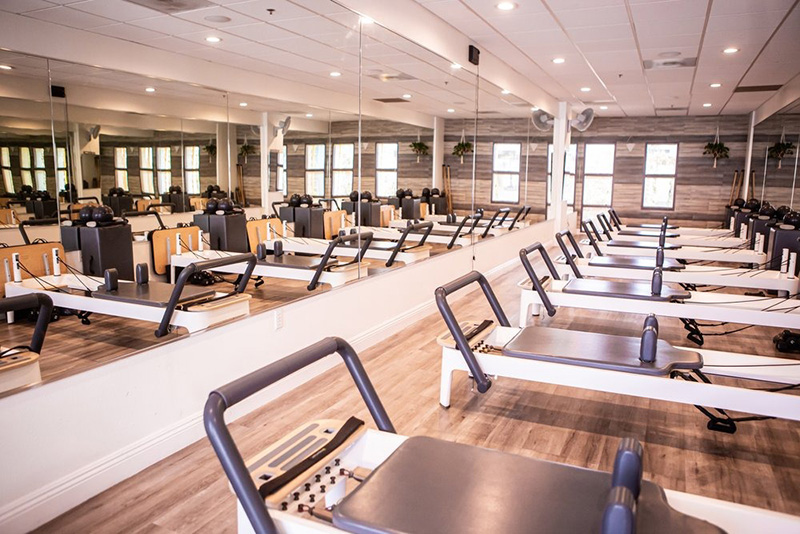How is Reformer Pilates different from Pilates?

Table of Contents

Reformer Pilates and traditional Pilates share the same core principles and movements but differ in terms of equipment and certain exercises. Here are the key distinctions:
Equipment:
- Pilates:Traditional Pilates exercises can be performed on a mat without the use of specialized equipment. The focus is on body weight resistance and controlled movements.
- Reformer Pilates:Involves the use of a machine called a Reformer. The Reformer consists of a sliding carriage, springs, ropes, and pulleys. This equipment adds resistance to movements and provides assistance or challenge, depending on the exercise.

Resistance:
Pilates: Relies on body weight and gravity for resistance. Some exercises may incorporate small props like resistance bands or balls.
Reformer Pilates: Utilizes the resistance provided by the springs and the moving carriage. This allows for a more customizable and varied level of resistance, making it easier or more challenging depending on the individual’s needs.

Versatility:
Pilates: Mat-based Pilates can be done virtually anywhere, making it more accessible for home practice. It focuses on building strength, flexibility, and core stability.
Reformer Pilates: The Reformer machine offers a greater range of exercises and variations compared to mat-based Pilates. It provides a platform for a comprehensive, full-body workout with more resistance options.

Support and Resistance:
Pilates: The emphasis is on core engagement and body awareness, with exercises often done lying on the floor or in seated/standing positions.
Reformer Pilates: The Reformer provides support for the body and can assist in maintaining proper form. Additionally, it offers resistance that challenges muscles throughout a wider range of motion.

Dynamic Movement:
Pilates: Focuses on controlled, flowing movements that engage the core and promote overall body awareness.
Reformer Pilates: The moving carriage on the Reformer adds a dynamic element to exercises, requiring increased control and coordination.
Both Reformer Pilates and traditional Pilates can be beneficial for improving flexibility, strength, and overall fitness. The choice between the two often depends on personal preferences, fitness goals, and access to equipment. Some individuals may incorporate both mat-based and Reformer Pilates into their fitness routine for a well-rounded approach.
Hey there partner !
How can we help you today?
Raetin’s Blog
Welcome to the Raetin
Your go-to destination for custom tips, newest design trends, and inspiration.





一个回复